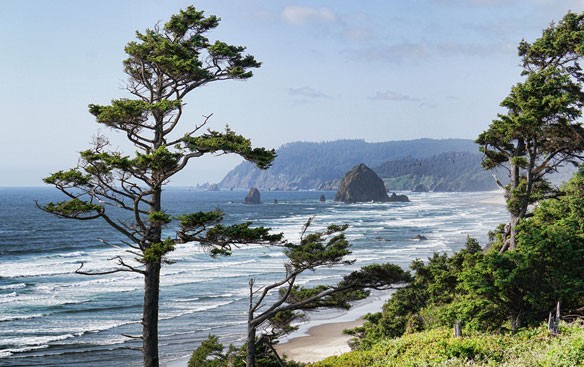
Oregon. Photo source: ©© Peter roome
By NOAA;
NOAA and the U.S. Environmental Protection Agency have disapproved the state of Oregon’s coastal nonpoint pollution control program because it does not sufficiently protect salmon streams and landslide-prone areas from logging impacts or reduce runoff from forest roads built before 1971.
All coastal states that participate in the National Coastal Zone Management Program are required to develop a Coastal Nonpoint Pollution Control Program that describes how they will prevent and control polluted runoff in coastal waters.
Both federal agencies hope the decision will help propel the state to address remaining gaps in its coastal nonpoint program related to forestry, fisheries and habitat. Nonpoint source pollution refers to pollution from diffuse sources including natural runoff that picks up and carries pollution into rivers, wetlands and coastal waters.
“We see the state and the forest products industry as critical partners in protecting habitat and water quality for salmon and trout and for the people and communities that rely on them,” said Will Stelle, administrator of NOAA Fisheries’ west coast region. “We’ve seen significant improvements in Oregon’s Endangered Species Act-listed coho populations over the last decade, and addressing these forestry issues will be key to continuing that progress.”
NOAA and EPA originally proposed to disapprove Oregon’s program in December 2013, noting the agencies’ willingness to help Oregon reduce polluted runoff primarily from timber harvesting. The runoff has been shown to harm coastal water quality and habitat for endangered coastal salmon and trout. Silt-choked runoff from poorly managed logging sites not only destroys habitat, but can kill salmon and trout fry and render headwater streams unusable for future spawning.
Following the 2013 proposal to disapprove Oregon’s program, Oregon added new measures to protect coastal waters. However, it does not yet have approved measures to protect small- and medium-sized streams from timber harvesting, protect landslide prone areas, or address runoff from forest roads built prior to modern construction.
“Both NOAA and EPA are optimistic that Oregon will take the necessary steps to address the gaps in their forestry practices,” said Dennis McLerran, EPA’s regional administrator. “Oregon has already shown that it wants to make improvements by undertaking a rulemaking process aimed at improving fish-bearing stream protections. We support the state in adopting protective new rules as well as other steps to address remaining gaps. We are committed to helping the state get to an approvable coastal nonpoint pollution control program.”
The timing of today’s decision resulted, in part, from litigation brought by Northwest Environmental Advocates against NOAA and EPA in 2009.









